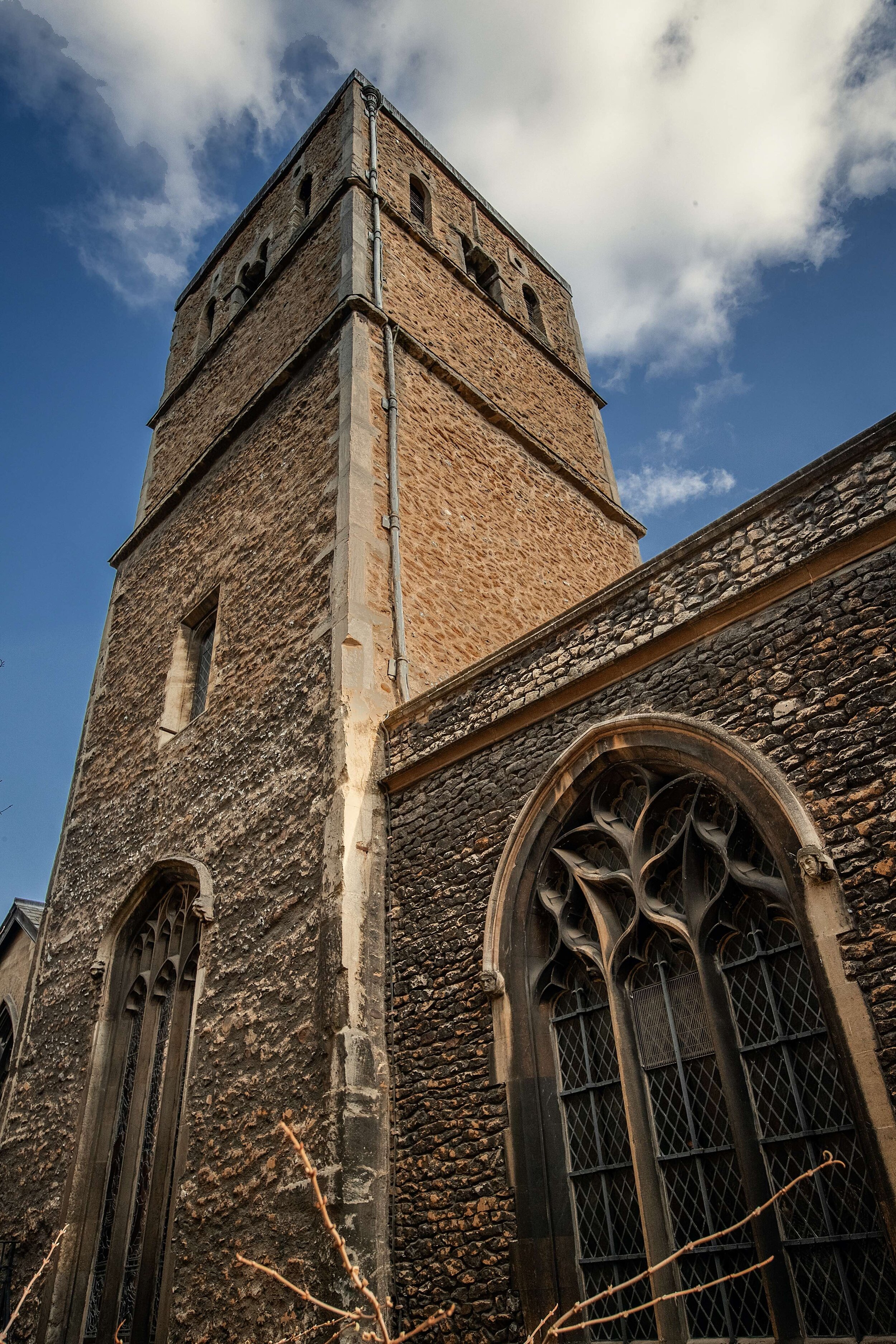
Bell Ringers at St. Bene’t’s
If you would like to learn to ring, or become a bellringer at St Bene’t’s, please contact us. Practices are on Friday nights.
It is likely that St Bene’t’s is the home of English change-ringing, invented by Fabian Stedman, said to have been parish clerk of St Bene’t’s in 1670.
Here is the extended history of St Bene’t’s Bells:
It is likely that the tower was built to contain bells from the beginning, but the earliest record of bells in the tower dates to the 13th century — by which time the bell of St Bene’t’s was used to summon students to special lectures and to examinations. The Rector, Alan, complained about this in 1273, but was persuaded by the Bishop of Ely to permit the bell to be used ‘in a civil and honest way’. Thereafter the parish clerk was paid an annual fee of six shillings and eightpence for such ringing. It is likely that there was more than one bell in the tower so it may have possessed a peal of four bells; the tenor was the best bell in town. For many years after that, St Bene’t’s bells were used for summoning to ‘ye schooles … acts, clearums, congregations, lecturs, disses, and such like’ according to a receipt for the six shillings and eightpence dated 1624. In 1553 there were ‘thre great Belles and one Sanctus Bell’, but by 1650 they were ‘much out of frame and almost become uselesse’. In 1655 the churchwardens appealed for money to repair the bells. The University gave thirty shillings, with the caveat that it was a free gift, not to be regarded as setting a precedent. Corpus Christi College also gave money.
Although the tenor bell is dated 1618, the churchwarden, Alexander Jacklin, was only born in 1605, suggesting that the bell is actually a later recasting of a 1618 Draper bell and perhaps dates from this time.
The ring of bells at St Bene’t’s was completed in 1663 when the treble bell of the six was hung. Further work was carried out in 1725 when Thomas Newman of Haddenham was paid one pound ten shillings for casting brasses (bearings) for the peal.
A barely legible board high in the tower commemorates the ringing in 1785 of a course of 720 Bob, giving the names of the ringers. This was not a full peal, which consists of 5040 changes and takes about three hours to complete. Forty five such peals have been rung on the bells, some rung for pleasure, others to commemorate a special event such as the retirement of a vicar, a wedding or the wedding or the passing away of a loved one.
In April, Mere’s commemoration is held in the church and the bells are specially rung for the service as it is the only one at which the University Bellringer is requested to be present. The Parish Clerk is also requested to be present and both are paid for attending.
The bells are regularly rung for Sunday morning service (9:05 to 9:55) and sometimes a quarter peal is rung for the evening service. They peal loudly for weddings and half-muffled for funerals. As noted above, Friday night is practice night, so if you would like to learn how to ring, come along between 7:30 and 9:00 pm. Occasionally the times of ringing may change, so check for any changes before planning a visit.
Today there are still 6 bells in the tower:
On the Treble bell, in addition to the other misspellings, the B of ROBARD is reversed and the A inverted. Tonally the fourth is the best bell and the third the worst. They all retain their canons (supporting loops) and are hung on wooden headstocks, swinging on ballbearings. The bell frame, made of wood, probably dates from the mid 17th century, though it was reconstructed and lowered some 10′ in the tower during restoration work in 1932. It now sits on a modern concrete ring beam.
The present tower captain is Sam Johnson.
St Bene’t’s is in the Cambridge District of the Ely Diocesan Association of bell ringers. District meetings are held on the second Saturday of the month, and are sometimes held at St Bene’t’s.

